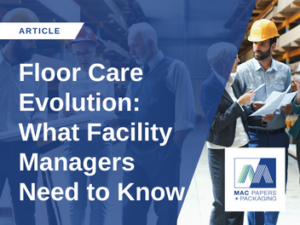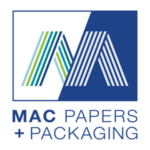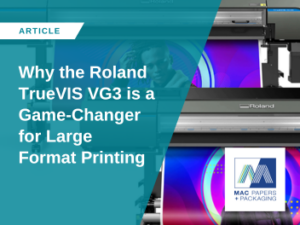Envelope Converting: Advancements in Customization and Personalization
Tackling Security Challenges: Ensuring Tamper-Proof Envelopes
Flower Power: Trends Shaping the Cut Flower Packaging Industry
Cooperative Purchasing 101: Leveraging the Power of the Network for Our Customers
The Importance of Proper Cleaning and Sanitation in Food Processing and Preparation
Food Service Trends for Facilities and Operations Professionals
Floor Care Guide: What Facility Managers Need to Know about Facility Supplies

Floor Care Guide: What Facility Managers Need to Know
When customers walk into a store or patients enter a hospital, they immediately begin to assess their environment, often judging a facility based solely on its aesthetic appeal. Your employees are no different—they deserve clean, safe facilities, too, regardless of whether or not your business receives customer traffic. Appearances and safety matter, and your floors make a subtle yet impactful statement about your organization’s brand, level of professionalism and commitment to cleanliness.
Commercial and industrial floor care options have changed over the years and will continue to evolve in the face of new substrates that reduce maintenance; the expectation for greener, more sustainable cleaning materials; and a maturing custodial workforce that requires continuing education to stay fluent in new trends.
Whether you run a hotel or elite university, your facility team needs to know about these trends and how to evolve with them. Here are a few ways to stay ahead of the curve.
Ease labor burdens with increased automation
Like most industries, the facility management (FM) sector has been hard hit by the labor shortage as leaders struggle to recruit and retain skilled talent. Research shows that 66% of facility managers and staff have left or have considered leaving their job in the past year. As FM staff age out of the workforce, organizations will need to replace these seasoned workers without breaking their budgets.
When FM professionals are in short supply, organizations can do more with less by investing in automation. Robotic scrubber-sweepers, for example, can clean large areas with minimal employee interaction or intervention, allowing teams to focus on more strategic, high-value tasks. This type of automation is especially useful for organizations that maintain massive warehouses, manufacturing plants or any other venue covering thousands of square feet.
Seek sustainable substrates and solutions
 From routine cleaning to waxing and stripping, floor care requires the use of many potentially dangerous chemicals. Opting for greener alternatives, such as water-based cleaning agents, non-toxic solutions and supplies made from all-recycled plastic, is a simple way to help protect the environment as well as your employees’ health. Seek a distribution partner that carries environmentally conscious brands and ask for guidance when building your facility’s sustainability strategy.
From routine cleaning to waxing and stripping, floor care requires the use of many potentially dangerous chemicals. Opting for greener alternatives, such as water-based cleaning agents, non-toxic solutions and supplies made from all-recycled plastic, is a simple way to help protect the environment as well as your employees’ health. Seek a distribution partner that carries environmentally conscious brands and ask for guidance when building your facility’s sustainability strategy.
An added bonus of prioritizing sustainability is the positive impact it can have on customer perception of your brand, as 4 out of 5 people describe themselves as likely to choose a brand with a positive approach to environmental sustainability. By using eco-friendly floor care products and promoting your commitment to sustainability, you can increase brand loyalty and attract new customers.
Don’t go it alone
With the rise of self-service technology and big box stores, it’s never been easier to purchase floor care products and other facility supplies. But convenience often comes at a cost, and organizations that rely on these quick solutions lose out on the industry knowledge and expertise a facility supply distributor can provide.
Find a partner that not only understands floor care trends and techniques, but one that can identify gaps in your FM strategy and help you fill them. Because although your next order of hardwood floor cleaner or surface disinfectant might be a click away, no online retailer will understand your business needs quite like your local supply partner.
For more on how to make the most of your floor care and maintenance program, reach out to our facility supply team.
Get in Touch Today!
Count on the benefits that come from our commitment to providing exceptional local management, inventory and sales expertise.
Products
Paper
Packaging
Wide Format
Envelopes
Facility Supplies
Resources
Order Online
Pay My Bill
Careers
Company
About Us
Environment
Blog
Contact Us
Follow Us!
© 2025 Mac Papers, LLC All Rights Reserved. | Privacy Policy | Terms and Conditions
Get In Touch Today!
Count on the benefits that come from our commitment to providing exceptional local management, inventory and sales expertise.
Follow Us!
© 2025 Mac Papers, LLC All Rights Reserved. | Privacy Policy | Terms and Conditions
Why the Roland TrueVIS VG3 is a Game-Changer for Large Format Printing
Why the Roland TrueVIS VG3 is a Game-Changer for Large Format Printing
Large Format technology is constantly evolving to be better, faster and more efficient than the printer models of years past. With the release of its latest printer/cutter in the TrueVIS VG3 series, Roland has solidified its reputation as one of the most innovative brands in the industry.
Both the VG3-540 and VG3-640 models are advanced wide format printing machines designed to meet the dynamic needs of modern printing businesses, sign shops, retailers and major enterprises. We’ll explore a few of the new features, benefits and upgrades that make TrueVIS a worthwhile investment.
Superior Print Quality
The VG3 series includes a newly designed printhead that delivers exceptional print quality and performance. Advanced True Rich Color technology ensures accurate color reproduction, allowing you to create crisp lines, sharp details and graphics with vibrant and consistent colors that pop. Both models also offer state-of-the-art media handling capabilities, including high-speed printing and automated inkjet maintenance, which yields consistent, reliable results.
In addition to superior print quality, the VG3 series is second to none when it comes to precise cutting capabilities. Whether you’re creating labels and decals or wall decor and vehicle graphics, the new TrueVIS machines can print and cut on small and large scales.
Versatility
Today’s sign and graphics professionals require versatile printers equipped to handle multiple print applications, from banners and signs to vehicle wraps and backlit displays. The VG3 series supports a variety of inks, including UV, resin and eco-solvent, plus large format media types and substrates, including vinyl, textiles and paper, making it an ideal choice for businesses that need flexibility in their printing capabilities.
User-Centric Design
Roland products are designed with the end user in mind, and this new series of wide format printers is no exception. The VG3 machines are designed for ease-of-use, with features such as a 7-inch LCD touch-panel control, auto-calibration and other intuitive, automated tools. The automated maintenance feature, in particular, ensures the printer is easy to operate and maintain, reducing downtime and increasing productivity.
Powerful RIP Software
Fueled by VersaWorks RIP software and Roland DG Connect, a powerful print operation app, the TruVIS goes above and beyond when it comes to boosting productivity. Roland DG Connect comes with data and visualization tools to optimize your print workflow, while VersaWorks boasts a host of features, including detailed color matching, simplified drag-and-drop functionality and all the tiling, nesting, variable data and color profiling tools you need to produce stunning visual communications.
Additional features include:
- Automated pinch rollers to ensure accurate print and cut operations
- Enhanced nozzle mask function, which helps to minimize printer downtime by allowing you to turn off a specific misfiring nozzle band without disrupting production
- Custom crop options to improve accuracy on long print runs of stickers and decals
- New media holder and other features to make loading easier
- Smart media clamps with integrated grooves that don’t interfere with sheet-cutting or need to be removed at any time
- Perforated sheet cut option, which allows for “easy tear” perforations between print jobs
Roland’s TrueVIS VG3 series large format printers are built to last. With superior print quality, color matching and enhanced product features, the upgraded series is a solid investment for businesses that want to stay on the cutting edge of the wide format printing industry.
If you have questions about the VG3 or want to set up a virtual or in-person demo, don’t hesitate to reach out.
Get in Touch Today!
Count on the benefits that come from our commitment to providing exceptional local management, inventory and sales expertise.
Products
Paper
Packaging
Wide Format
Envelopes
Facility Supplies
Resources
Order Online
Pay My Bill
Careers
Company
About Us
Environment
Blog
Contact Us
Follow Us!
© 2025 Mac Papers, LLC All Rights Reserved. | Privacy Policy | Terms and Conditions
Get In Touch Today!
Count on the benefits that come from our commitment to providing exceptional local management, inventory and sales expertise.
Follow Us!
© 2025 Mac Papers, LLC All Rights Reserved. | Privacy Policy | Terms and Conditions
The Rise of Sensors & IoT Technology in Facility Management

The Rise of Sensors and IoT Technology in Facility Management
From office buildings and high-rise hotels to airports and manufacturing plants, the growing complexity of facilities is fueling a shift in how they’re maintained. Many facilities and property managers are embracing the move from human oversight to digital oversight, as it allows them to focus less on tactical tasks and more on strategic programs that enhance productivity, minimize waste and resource consumption and in some cases, even reduce their carbon footprint.
IoT, Defined
One of the fastest growing technologies is known as the Internet of Things, or IoT. The Internet of Things is a massive network of connected objects and people, all of which collect, transfer and share data with other Internet-enabled devices. In the world of IoT a “thing” can be virtually anything—or anyone. Connected home appliances, such as smart TVs and refrigerators, automobiles outfitted with sensors that detect things like low tire pressure, heart patients with pacemakers, and pets tagged with microchips are all examples of IoT and sensor technology in action.
As connected consumer products continue to grow in popularity, these devices are increasingly making their way into commercial facilities and business environments alike. We’ll explore how IoT and sensor technology can have a positive impact on your facilities management strategy, and how you can begin to effectively implement these game-changing tools.
Technology in Facility Management
IoT is ideal for sizable facilities with a substantial footprint. Teams that manage large or multi-site facilities are tasked with a wide range of responsibilities, including safety and security, operational activity, cleaning and maintenance and more.
These are just a few examples of IoT and sensor technology and how it can assist with the many different facets of facility management:
- Energy consumption: With the help of IoT and motion sensors, you can reduce energy consumption by turning off lights when rooms are unoccupied, or adjusting the temperature via remote thermostat controls. The same technology can help to minimize water consumption when applied to touchless restroom faucets.
- Asset monitoring: IoT can help facilities managers stay stocked with sensors that send alerts when supplies are running low.
- Labor management: IoT tech allows facilities leaders to monitor employee productivity, assign tasks and make adjustments to labor resources as necessary.
- Equipment usage: Sensors and IoT tech are perfect for tracking equipment usage and detecting failures in HVAC systems, plumbing and beyond, enabling facilities teams to perform preventive maintenance and quickly reduce downtime when issues associated with aging equipment or hardware arise.

Sustainability and LEED Certification
The green movement has spurred a sea change in how buildings are constructed, maintained and operated. Many businesses are striving to be more energy efficient and environmentally friendly, and one way to do this is by becoming LEED certified.
LEED provides a framework for healthy, efficient, carbon and cost-saving green buildings—and IoT can help facilities reach their sustainability goals. In fact, some facilities were able to cut their costs by up to 30% with the help of IoT technology.
While IoT can make a tangible difference in your facility management approach, it’s important to note that it’s not perfect, and there is a learning curve when implementing these tools. Third-party integrators can help merge IoT data and integrate systems into your existing infrastructure, but the sheer volume of data IoT produces creates a challenge when it comes to analyzing and acting on this data. Ideally, facilities operators would have a single source of IoT information, but this can be difficult to achieve when using multiple integrators, dashboards, etc.
If you’re curious about exploring ways to improve your facility management strategy, a Mac Papers + Packaging Facilities Supplies expert is ready to chat.
Get in Touch Today!
Count on the benefits that come from our commitment to providing exceptional local management, inventory and sales expertise.
Products
Paper
Packaging
Wide Format
Envelopes
Facility Supplies
Resources
Order Online
Pay My Bill
Careers
Company
About Us
Environment
Blog
Contact Us
Follow Us!
© 2025 Mac Papers, LLC All Rights Reserved. | Privacy Policy | Terms and Conditions
Get In Touch Today!
Count on the benefits that come from our commitment to providing exceptional local management, inventory and sales expertise.
Follow Us!
© 2025 Mac Papers, LLC All Rights Reserved. | Privacy Policy | Terms and Conditions
MRO Goes Digital: Facility Management Trends for the New Year
MRO Goes Digital: Facility Management Trends for the New Year
The maintenance, repair and operations (MRO) industry is booming, with even more growth on the horizon: Between 2023 and 2028, the market is forecasted to expand at a rate of 2.3%, catapulting the total market value from $685.5 billion to $787.2 billion by 2026.
A major catalyst driving this growth is the rapid digitization occurring across the MRO and facility management (FM) space. Long considered a manual, analog process, MRO is increasingly becoming a digital-first industry as FM leaders adopt technologies like IoT, sensors and smart equipment. Once you examine the benefits MRO tech has to offer—enhanced efficiency, improved workflows, increased agility and flexibility, and the relative ease of implementation—it becomes clear that these technologies have the power to transform your facilities.
Here are a few of the trends we’re seeing take over the MRO sector and how you can leverage them to improve performance.
Data, Data Everywhere
Many business and facility leaders find themselves grappling with a glut of data and digital information, thanks in part to the increased number of connected devices being used across the workforce. In MRO, this includes smart equipment outfitted with sensors that relay information about an asset’s maintenance needs and overall health. Armed with this data, facility managers and operations leaders are able to proactively service equipment before a breakdown occurs, saving businesses considerable time, money and resources.
While data often uncovers useful insights that can be incorporated into your MRO strategy, it can be overwhelming if you don’t have a way to decipher and optimize it. That’s where automation and integration come in.
Automation and Integration
Everything from performance reports to facility supply orders can be automated. Because each business, and by extension, each MRO function, is different, there isn’t a one-size-fits-all approach to automation or integration—some organizations may choose to automate their work order processes, while others may focus more on invoice automation when submitting payments to vendor partners or contractors.
Integration is another trend that will continue to grow over the coming year, especially for tech-savvy organizations seeking ways to aggregate their data. The goal of integration is to manage different FM data streams and house them under one roof, making it easier to turn the information into actionable business insights.
Predictive Maintenance > Preventive Maintenance
If you’re in the MRO industry, you’ve heard of preventive maintenance, which IBM defines as “the act of performing regularly scheduled maintenance activities to help prevent unexpected failures in the future.” But what about predictive maintenance?
Predictive maintenance involves continuously monitoring assets and equipment in order to predict when a failure will occur. Once a potential issue has been identified, facility managers can take preventive measures to reduce the likelihood of a failure or breakdown.
According to the Department of Energy’s Federal Management Program, predictive maintenance can save roughly 8-11% more than preventive maintenance alone, and as much as 40% more than reactive maintenance. With that amount of savings on the line, there’s no doubt predictive maintenance—and the artificial intelligence (AI), automation and IoT tools needed to enable it—will continue to gain momentum in MRO and facility management.
“Going digital” means different things to different organizations, and getting started can feel like a daunting task—but you don’t have to go it alone. Reach out to a Mac Papers + Packaging Facility Supply specialist today for more information.
Get in Touch Today!
Count on the benefits that come from our commitment to providing exceptional local management, inventory and sales expertise.
Products
Paper
Packaging
Wide Format
Envelopes
Facility Supplies
Resources
Order Online
Pay My Bill
Careers
Company
About Us
Environment
Blog
Contact Us
Follow Us!
© 2025 Mac Papers, LLC All Rights Reserved. | Privacy Policy | Terms and Conditions
Get In Touch Today!
Count on the benefits that come from our commitment to providing exceptional local management, inventory and sales expertise.










